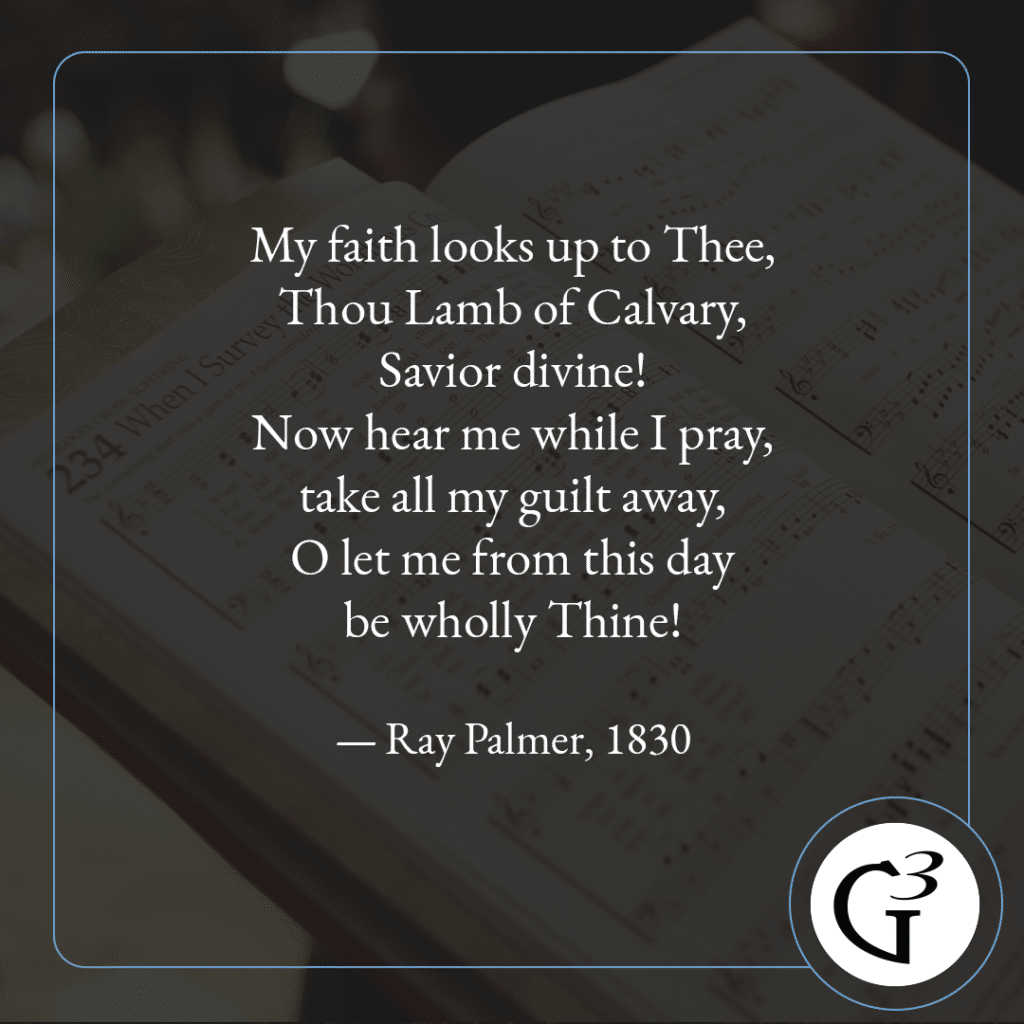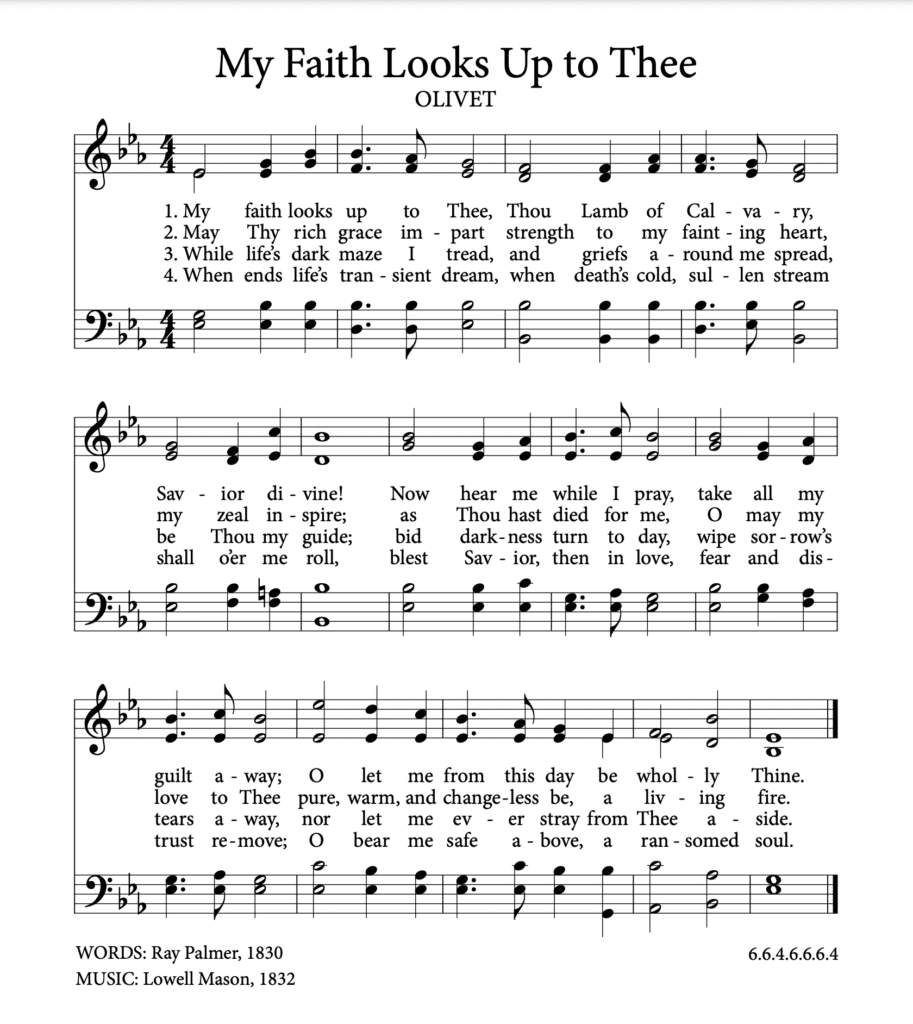
The man had heard the stories, but he hardly dared to believe that they were true. A Teacher from Nazareth was said to be able to heal the sick. Some were even saying that this might be the Messiah Himself. Perhaps this Teacher could cast a demon out of the man’s young son.
But when he went to look for the Teacher, he found only the Teacher’s disciples, and they were unable to help the boy. But then the Teacher returned, and asked to see the boy. The desperate father said, “If You can do anything, take pity on us and help us!”
“‘If You can?’” asked the Teacher. “All things are possible to him who believes.”
“I do believe!” cried the father. “Help my unbelief.” (Mark 9:14-24).
Some nineteen hundred years later, Ray Palmer (1808–1887) arrived in Boston as a recent college graduate, intent on pursuing ministry but weary after years of working long hours and dealing with poor health. He desired to pursue theological education at Yale, but after college had taught in a girls’ school in New York City to earn money. Now in Boston, he happened to meet Lowell Mason, the well-known music educator, hymnal editor, and composer. Mason was compiling a new hymnal, and asked this young seminarian if he had any poems to contribute.
Palmer did, but it was only a poem he had written quickly as a prayer for greater faith and strength shortly after his college graduation. He had never intended it for general use in churches, and only with reluctance showed it to Mason. Palmer handed Mason a notebook where the poem was written down, and Mason found a sheet of paper to make a copy for himself. That night, Mason sat in his studio and re-read Palmer’s poem. Struck by the power of it, he immediately set to work writing a tune.
Finding Palmer several days later, Mason told him, “Mr. Palmer, you may live many years and do many good things, but I think you will be best known to posterity as the author of ‘My Faith Looks Up to Thee.’” While Palmer did go on to serve as a pastor, denominational official and translator of Latin hymns, as Mason predicted he is best remembered for a passionate prayer for greater faith written when he was only 21 or 22.
Palmer’s prayer-hymn reflects the same cry for greater faith as the father of the demon-possessed boy in Mark. In the first stanza, Palmer fixes his faith on the only true Object, Jesus, the Lamb of Calvary. He prays not that his sin would be taken away (which happened at the moment of salvation), but that his guilt would be removed. Freed from the guilt which dogs even the most stable believer, the poet can be free to live wholly committed to Christ.
In the second stanza, the poet asks that God’s rich grace would give strength to his fainting heart and would inspire new zeal. Christ’s sacrifice on Calvary gives all the motivation needed to return to Him a pure, warm and changeless love.
The third stanza drops us into the disorienting image of picking one’s way through a dark maze. As griefs bear down, only Christ can be our guide, turning the darkness into daylight and banishing griefs, sorrow and tears.
The poem concludes with another chilling image—standing at the brink of death’s river. Here, one must ask one last time—will my faith hold up? (This theme is also memorably explored in the last stanza of John Donne’s stunning “A Hymn to God the Father.”) Palmer’s words are also reminiscent of the climactic scene of Pilgrim’s Progress, when Christian begins to sink beneath the waters of the Jordan River. He cries out to his friend Hopeful, who responds, “Be of good cheer, my brother; I feel the bottom, and it is good.” Palmer’s hymn concludes in faith, asking Christ to remove any last fear and distrust, and to bring him safely to heaven. Palmer has found that the bottom is indeed good.
This remarkable hymn, from the pen of a young man asking God for greater strength and faith through his trials, shows a striking maturity and has provided comfort to numerous believers ever since Lowell Mason first published it.
My faith looks up to Thee,
Thou Lamb of Calvary, Savior divine!
Now hear me while I pray, take all my guilt away,
O let me from this day be wholly Thine!
May Thy rich grace impart
Strength to my fainting heart, my zeal inspire!
As Thou hast died for me, O may my love to Thee,
Pure, warm, and changeless be, a living fire!
While life’s dark maze I tread,
And griefs around me spread, be Thou my guide;
Bid darkness turn to day, wipe sorrow’s tears away,
Nor let me ever stray from Thee aside.
When ends life’s transient dream,
When death’s cold sullen stream shall o’er me roll;
Blest Savior, then in love, fear and distrust remove;
O bear me safe above, a ransomed soul!
—Ray Palmer, 1830




